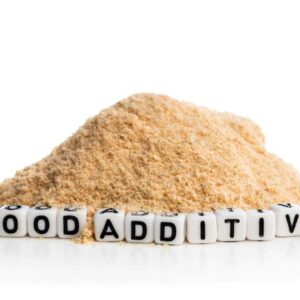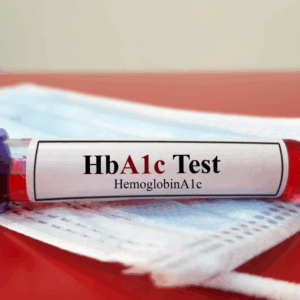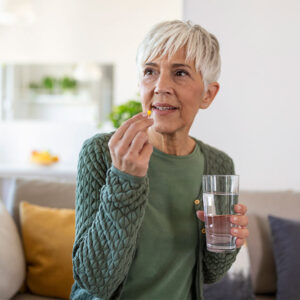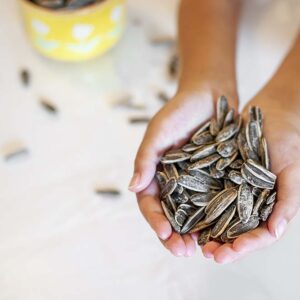
The EPA Says This Carcinogen Is Perfectly Safe
Dear Reader,
Like most Americans, chances are there is a bounty of toxins in your garage or shed. Antifreeze, gasoline, motor oil, paint thinner… just to name a few.
Let’s face it– chemicals are a nasty necessity of modern life.
But, you would never mix brake fluid into your soup or marinate your Sunday afternoon steaks in diesel fuel.
So how is it that over 80 percent of food in this country contains ingredients doused in poison? 1
It’s simple–this cancer accelerant that you have in your garage is used on 93 percent of corn and 94 percent of soy crops grown in America.1
And corn and soy are in everything. Cereals, granola bars, cooking oils, “healthy” processed snacks….
We all try to be vigilant about the ingredients in our foods, but life gets busy and expensive-sometimes we have to take shortcuts.
Does that mean we should be eating carcinogens or feeding them to our families?
No, but it seems that our food supply isn’t lending us many alternatives to these cancer laced crops.
Besides….the hard working scientist at the EPA say this product is totally food safe.
Yet, studies have also shown this toxic herbicide is associated with cancer, digestive disorders (celiac disease and irritable bowel syndrome to name a couple), autism, obesity, Alzheimer’s disease, Parkinson’s disease, infertility, and depression.5
So what is this killer cocktail?
Monsanto’s Roundup, of course. The most commonly used herbicide in the world.3
Wait… Digestive disorders, obesity, Alzheimer’s… sounds like the negative health outcomes associated with GMOs. Coincidence?
Monsanto did themselves a favor by creating Roundup-ready crops (genetically modified seeds that are resistant to Roundup).
Basically, food crops can be doused in gallons of Roundup without being ruined– yet Roundup will kill any weed around.
In fact, after their 2013 study, Thomas Bohn and Marek Cuhra reported:
“We tested these samples for nutrients and other compounds as well as relevant pesticides, including glyphosate (the active ingredient in Roundup) and its principal breakdown product, aminomethylphosphonic acid (AMPA). All of the individual samples of GM soy contained residues of both glyphosate and AMPA, on average 9.0 mg/kg. This amount is greater than is typical for many vitamins. In contrast, no sample from the conventional or the organic soybeans showed residues of these chemicals”
Greater than the typical amount of vitamins? Yikes!
What’s more alarming– glyphosate is less destructive in its pure form than it is as the Roundup mixture available at your local hardware or big-box store.4
That’s right… it is less toxic as a single ingredient.
It’s the lethal combination of ingredients in this herbicide that makes it 125 percent more hazardous to your health than an unadulterated dose of the main active ingredient.1 The added surfactants (emulsifiers) and adjuvants (potency accelerators) that make it more deadly are listed as “inerts” by the manufacturer. And there is no information or testing for adverse health effects available.4
Roundup in Your Food- EPA Says It’s Safe
A report by the World Health Organization’s cancer agency, the International Agency for Research on Cancer (IARC) classified glyphosate a probable human carcinogen earlier this year.
The EPA says glyphosate is totally safe and doesn’t even list cancer as a health effect.
Huh?
A global health authority reports Roundup as a probable cancer agent and the EPA reports it’s safe?
In fact, in their fact sheet for glyphosate, the only suggestion they offer to reduce levels of glyphosate in drinking water is to use a water filter.
The EPA says glyphosate “tends to adhere to sediments” and “does not tend to build up in aquatic life.” Sounds like really good science.
Such widespread usage creates an opportunity for Roundup to invade our surface waters. Run off from yards, farms, golf courses and any other green space inevitably ends up in our lakes, streams, and oceans– exposing fish and other food sources to this toxic nightmare.
One study showed that fish exposed to glyphosate presented gastric symptoms that mimic those of celiac disease in humans.3
If these EPA reported “tendencies” of glyphosate are so factual, why are fish being affected by it?
Maybe these fish don’t have a water filter…
And what about those mysterious “inerts” that increase negative health affects? Why hasn’t the EPA made Monsanto identify these chemicals? Where do they go in the environment?
Don’t think this applies to you because you choose organic produce and eat grass-fed and free-range meat?
I bet it does.
The famer of your produce or livestock may not use Roundup, but their farming neighbor might.
Even a farmer or suburban gardener hundreds of miles away might be inadvertently putting your family at risk.
Roundup lingers around in soil for about 60 days after its use. This means, every time you use Roundup, it will take about two months for it to be out of the environment.
Unfortunately, farmers and most residential gardeners use it more frequently than every 60 days- this means the exposure is constant. Rains, flash flood, and even normal weather and surface water patterns can quickly filter this poison to pastures and crops far away from the site of origin.
That means those free-ranged animals in your lunch likely had a dose of this toxin with their lunch.
Bringing It Home
Round up is a common household product. I bet if you don’t have it in your garage or shed right now, someone you know, like millions of unassuming consumers worldwide, certainly does. You, your family, your friends, and your neighbors have all probably used this product many times.
Now that you know the potential dangers of Roundup, you might be wondering how to get rid of it.
It’s fairly simple to dispose of Roundup safely….
If you have empty bottles, you can place them in the trash. They must be completely EMPTY and should NEVER go in with the recycling. Plastics are contaminated with the herbicide and should not be put back into the consumer market.
For bottles with product in them, you can call your local waste management services and request a hazardous pick up date or a hazardous drop-off location.
NEVER put Roundup down the drain or toilet. There is already enough in our drinking water. No need to further the contamination.
While you have no control over how others uses this product, you can protect yourself and your home garden from this toxic potion. It is surprisingly easy and cost-effective to rid your garden of weeds without the use of Roundup.
Here are a few simple and natural solutions to sort out your unwanted plant guests:
Pull them — By ripping the root system out of the soil, you are destroying the plants life line. It is the safest and most effective way to destroy weeds. Though, I will warn you, when it comes to dandelions or any other weed with a taproot, it will take some effort to rid your garden of them completely using this method.
Boiling water— Boil a large pot of tap water and douse down those sidewalks and flower beds. The heat from the water will wilt the leaves and stems and kill the plant. Watch where you’re dousing though, hot water will kill any plant it comes into contact with.
Vinegar— Spray down leaves with pure white vinegar and watch the weed wither away. This may take a few applications, but you will see results. You can add a few squirts of dishwashing liquid to increase the potency. Be sure to only spray only the leaves of unwanted plants and to avoid soil contamination.
Salt— Dilute one part salt with eight parts water in a spray bottle. Spray this solution on to the leaves of weeds only! Be careful not to get this salty solution on the soil. Salt in the soil will prevent any plants from growing.
If you are an apartment dweller like myself or just don’t have a home garden, you can lower your exposure to glyphosate by eating an organic diet when available, and always to be sure to wash your produce, organic or not– this stuff is everywhere.
For more information on glyphosate, or if you are interested in testing the levels of this cancer creator in your body, water or food- you can do so at detoxproject.org.
They offer testing of levels glyphosate in urine, breast milk, and drinking water for a fee. They will have food testing available soon. In addition to the testing, they offer detox suggestions.
If you have any food concerns or other health issue you would like us to discuss. Let us know- we would love to hear from you!
Live Well,

Natalie Moore
Managing editor, Living Well Daily
[1] http://www.ers.usda.gov/data-products/adoption-of-genetically-engineered-crops-in-the-us/recent-trends-in-ge-adoption.aspx
[2] http://www.epa.gov/safewater/pdfs/factsheets/soc/tech/glyphosa.pdf
[3] Samsel A, Seneff S. Glyphosate, pathways to modern diseases II: Celiac sprue and gluten intolerance. Interdisciplinary Toxicology. 2013;6(4):159-184. doi:10.2478/intox-2013-0026.
[4] Mesnage R, Defarge N, Spiroux de Vendômois J, Séralini G-E. Major Pesticides Are More Toxic to Human Cells Than Their Declared Active Principles. BioMed Research International. 2014;2014:179691. doi:10.1155/2014/179691.
[5] Samsel A, Seneff S. Glyphosate, pathways to modern diseases III: Manganese, neurological diseases, and associated pathologies. Surgical Neurology International. 2015;6:45. doi:10.4103/2152-7806.153876.
Written By Natalie Moore
Natalie Moore is a dedicated health researcher with a passion for finding healthy, natural, and science-based solutions. After a decade of direct healthcare experience in western and natural medicine, she was involved in public health research before joining Living Well Daily.
View More Free Articles
"Invisible" Food Ingredients SABOTAGE Blood Sugar
If you’re trying to keep your blood sugar in check, you know the drill. Cut way back on sugar in your diet. While you’re at it, rein in your fat intake too, which can lead to insulin resistance. And don’t forget the extra calories—they add up fast and can sabotage your blood sugar control. But...
The Alarming Microplastic Secret Hidden in Your Chewing Gum
Today I want to honor and thank mothers and mother figures whose caring hearts have guided us through life’s journey. Your love has shaped generations. Happy Mother’s Day! That pack of gum in your pocket may be doing far more than just freshening your breath. A disturbing new study finds chewing gum is a surprising...
Plant Compound SLASHES A1c Levels in 12 Weeks
Diabetes is skyrocketing in the United States. And the trend shows no sign of slowing down. The projected number of adults with diabetes is expected to increase from 22.3 million (9.1 percent) in 2014 to 39.7 million (13.9 percent) in 2030, and further to 60.6 million (17.9 percent) by 2060. That’s a massive 165 percent...
Two-Week Diet Switch Transforms Your Health
You know how you feel sluggish and “off” after a vacation filled with fast foods and processed snacks? Well, it’s not all in your head (or merely guilt). When you switch to an unhealthy Western-style diet, there are physical consequences—and they kick in faster than you might think… The Western diet is characterized by ultra-processed...
WARNING—Your Water Bottle Is Hiding a Disgusting Secret
Recently, a few people have asked me if it’s true that their water bottle has more germs than a toilet seat. It’s a shocking comparison that’ll make you think twice about everyday objects you use without much thought. So, is this claim true? Well, I must warn you that you might not like the answer…...
Research Reveals 3-for-1 Brain Protection "Checklist"
Age-related brain diseases—including stroke, dementia, and depression—threaten our quality of life. They can take the shine right out of your Golden Years. But you don’t have to take these threats lying down. While there are no guarantees in life, there are steps you can take to turn the odds in your favor—especially when it comes...
Mailbag: Your “Healthy Diet” Might Leave You Running on Empty
“Do supplements really work?” Hopeful Skeptic Hi Hopeful, That’s a fantastic question! It gets straight to the heart of a vital fact about human biology. Our bodies are incredible machines. But they don’t work in a vacuum. They require outside help to function. For example, they can’t manufacture most vitamins and minerals on their own....
Forgotten 80s Superfood Reemerges as Artery Superstar
Do you remember when vitamin E was the talk of the town? This common nutrient had a surge of popularity in the 80s and 90s. But now I can’t remember the last time I had a patient ask me about it. Well, it turns out this forgotten 80s superfood deserves another moment in the spotlight....
Strokes CAN Strike Twice—This Simple Fix Cuts Your Risk 20%
They say lightning never strikes twice in the same place. But that old adage couldn’t be further from the truth when it comes to strokes. If you’ve had a stroke, you might think you’re out of the woods once you recover. But the reality is far different… A comprehensive study published in JAMA revealed the...
Can Your Diet Defend Your Brain From Aging?
Our brains work hard every day, helping us solve problems, create memories, and connect with loved ones. But as we age, they face new challenges that can quietly chip away at our vitality. One of those challenges? The buildup of iron. Though iron is essential for many functions, too much can harm your brain, contributing...









